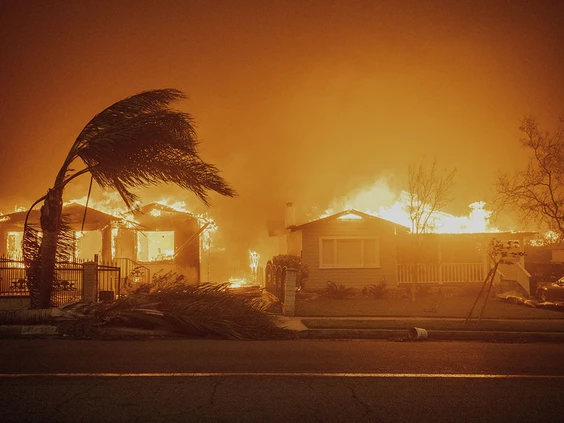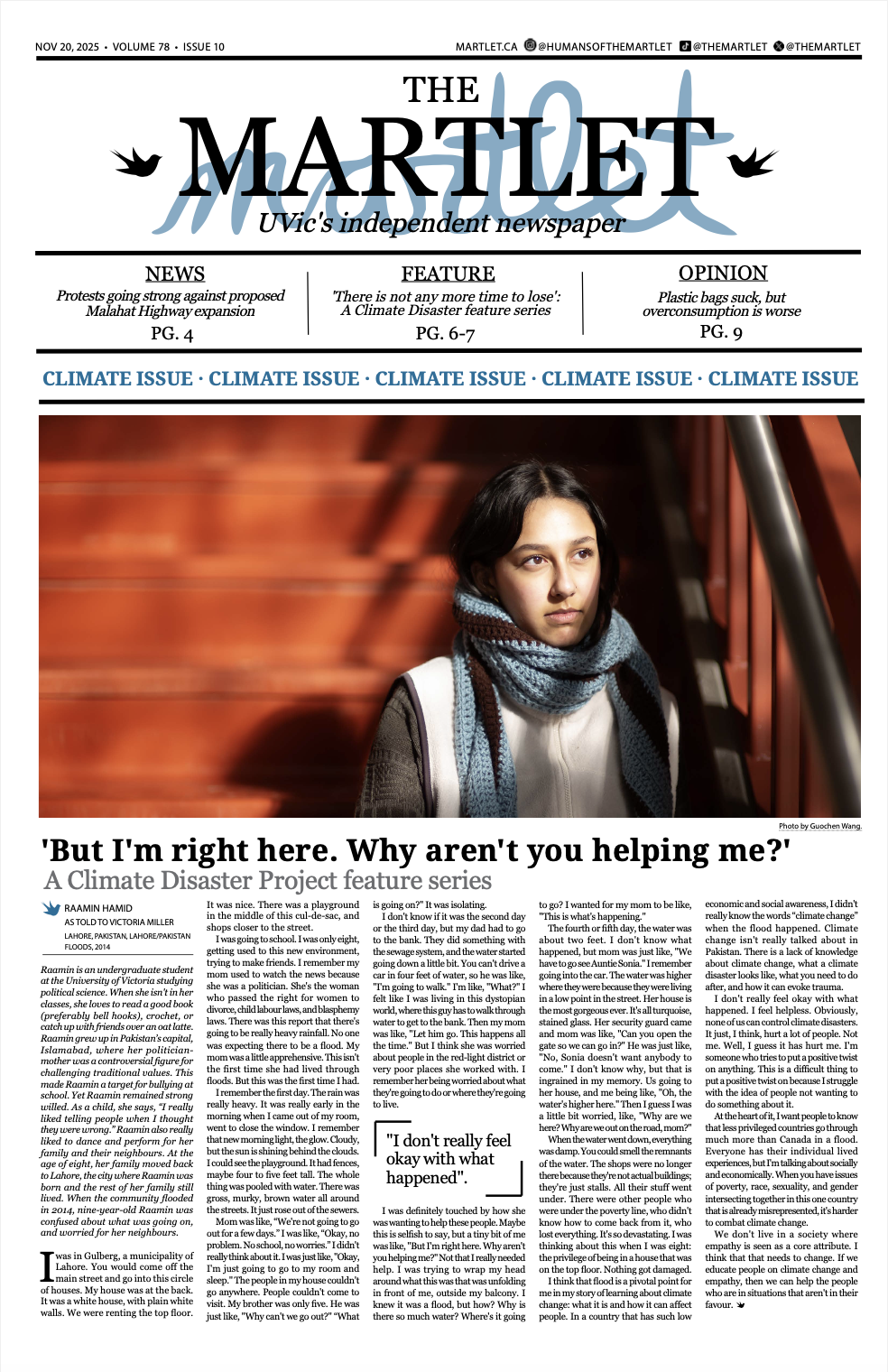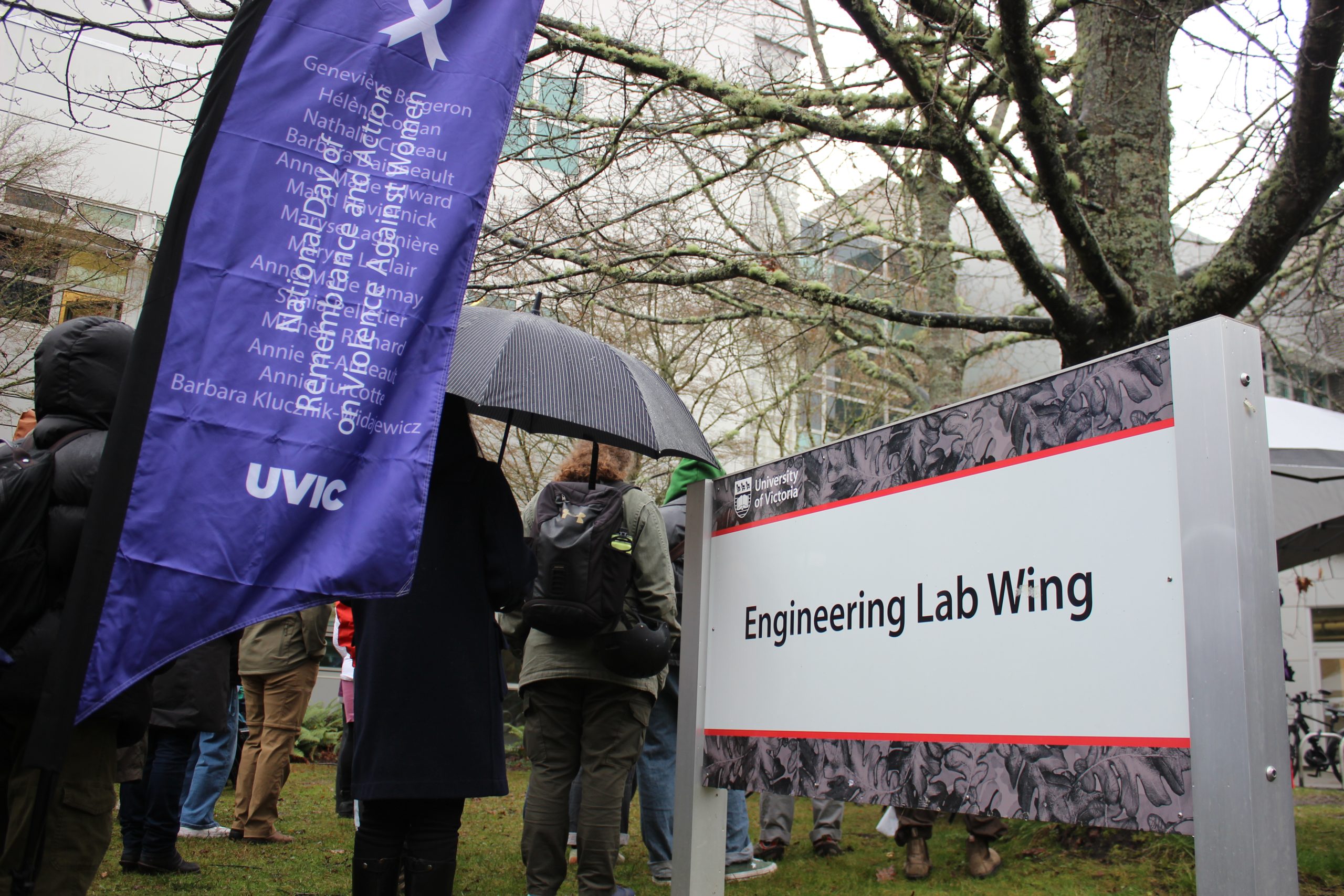‘It can happen to us’

Photo by Ethan Swope via AP Photo.
On Jan. 7, 2025, a number of highly destructive fires broke out in the Los Angeles area. In the wake of these fires, experts warn that British Columbia’s cities — even those in lush, coastal areas like Victoria — are not immune.
To date, 29 deaths have been attributed to the LA fires, according to the Los Angeles county medical examiner’s office. The fires have also burned an estimated 57 528 acres (233 square kilometers), destroyed almost 18 000 structures, and forced more than 200 000 people to evacuate their homes.
AccuWeather estimates the fires have caused between $250 and $275 billion USD in damage, surpassing the cost of the entire 2020 wildfire season, as well as Hurricane Katrina in 2005, which caused an estimated $200 billion of damage.
Kelsey Winter, a PhD candidate in the School of Public Administration at UVic, says that the hot, dry conditions which increase the risk of fire are related to climate change.
“We see an increase in wildfire activity, and we saw it in the last two years, 2023 and 2024 being the two worst fire seasons in Canada’s history,” Winter said.
“That risk is correlated to climate change in a lot of ways … with the changing temperature, with drought, with lower humidity. All those things impact and increase the threat, the risk of wildfire,” she told the Martlet.
The B.C. government warns of higher annual temperatures in the summers, and the potential for drought conditions to develop as a result of climate change, like in Los Angeles. Winter says these conditions reduce the time firefighters have to respond.
“Because the fuels are drier, fire has the ability to move faster, which [means] you have less time than to catch them and keep them at a small area,” she said.
Winter added that the increased frequency of lingering cold fronts in B.C. during the summers increases our risk of out-of-control fires. “Cold fronts [used to pass] quite quickly, and now we see them lingering … We get these wind events more often than we have before,” Winter said.
Even though the colder weather and rain associated with cold fronts are not typically considered to be high-risk conditions for fires, experts including Winter and the BC Wildfire Service say that strong winds and lightning are both major risk factors when it comes to fire.
This was the case in July 2024, where, according to the BC Wildfire Service, strong winds brought on by a cold front caused the rapid expansion of a wildfire near Golden, B.C.
B.C. is no stranger to severe fires. In 2021, most of Lytton burned to the ground after a fire south of the town was pushed north by strong winds, growing rapidly out of control in the process. More recently, in July 2024, much of Jasper — a town on the western edge of Alberta — was destroyed after wildfires from the surrounding area reached the town.
The difference, however, is that these fires began in the wilderness, whereas the Los Angeles fires occurred in a large urban environment. Winter warns against thinking that because coastal British Columbia’s climate is different from LA’s, a fire as severe couldn’t break out here.
“I think one of the prevailing feelings in a country like Canada and a province like B.C. is, ‘We’re insulated, we’ve got lakes, and this lush green vegetation. We’re not California.’ But in reality, with climate change and a host of other factors [like] urban expansion … we are getting into a place where it can happen to us.”
“[In] the videos and the footage of Los Angeles, you see the houses gone and the trees in between the houses still standing. That’s no different than a big urban conflagration would be here in Victoria … It’s not a wildfire. It’s a fire that’s moved into the built environment, and then is being sustained by [houses].”
She warns that similar constraints contributing to the Los Angeles fires, including urban density, and limited road space would also be problematic in Victoria.
Rob Jones, Assistant Deputy Chief of Operations at the Saanich Fire Department and a Task Force Leader for the BC Wildfire Service Structure Protection Unit, said that BC Wildfire is constantly monitoring Vancouver Island, as well as the rest of the province, for fire risk.
“I know the island is getting [to be] of concern as global change happens. It appears to be getting warmer all the time here, and drier. We have so much vegetation on the coast — the mainland coast, and the island — that it is a concern of BC wildfire, and they’re on it,” he said.
Jones also told the Martlet about a number of tactics employed by the Structure Protection Unit, including attaching sprinklers to buildings to mitigate the risk of a structure catching fire from embers carried on the wind.
Both Jones and Winter stressed the importance of getting accurate information and being prepared for emergency scenarios, and mitigating the risk around one’s home.
Using fireproof materials like fibreglass, steel, and cement, keeping vegetation away from buildings, and regularly cleaning gutters are all ways to reduce the risk of fire spreading to one’s house, said Jones.
“Being prepared, looking at programs like FireSmart, you know, now it’s just so important,” Winter said.








